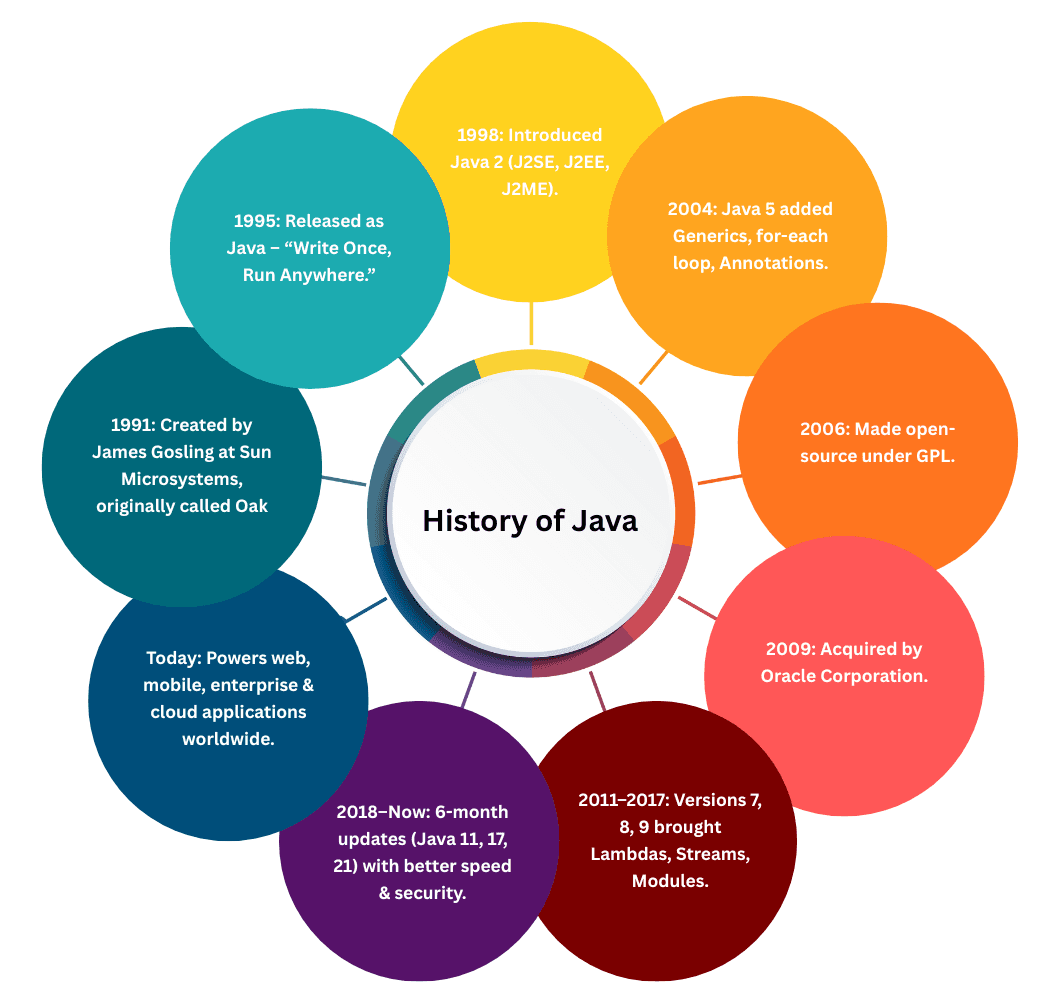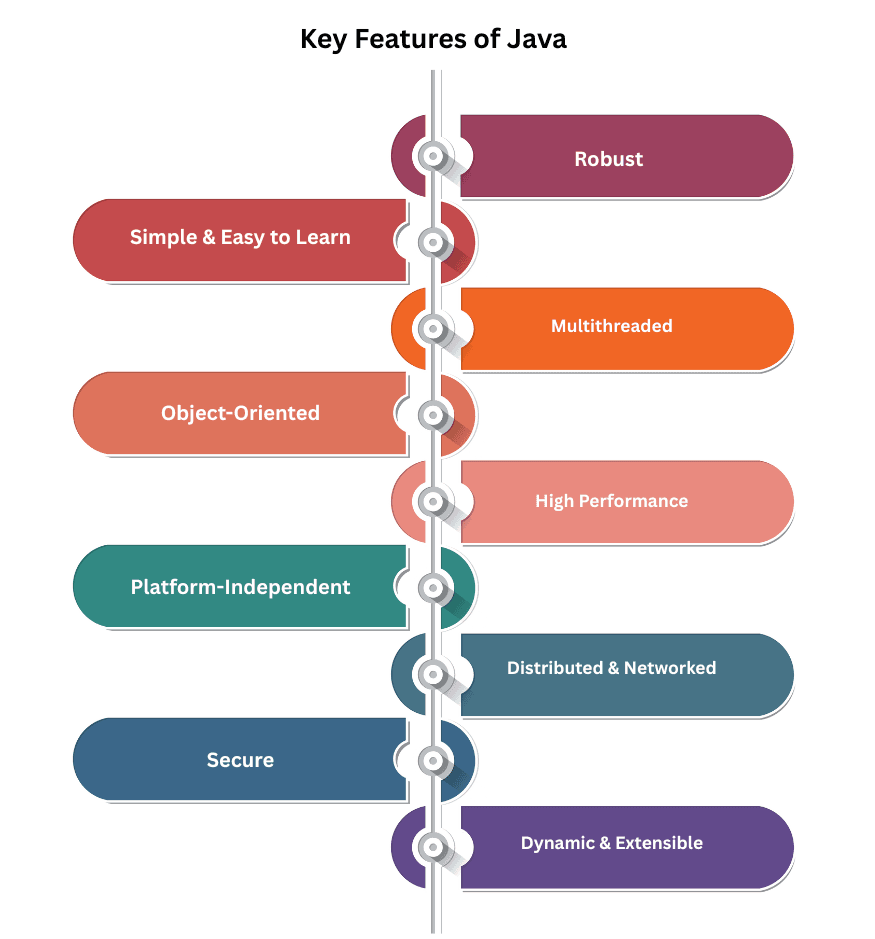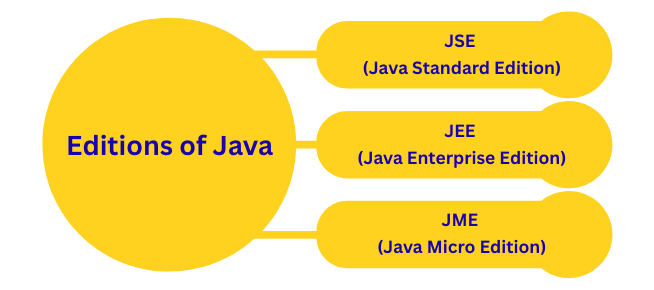What is Java? History, Features & Editions (JDK / JRE / JVM
Java is one of the most popular and powerful programming languages in the world. It is known for its simplicity, reliability, and platform independence, making it ideal for beginners as well as professionals.
What is Java?
Java is a high-level, object-oriented, and platform-independent programming language developed by Sun Microsystems (now owned by Oracle).
It is used to build:
- Desktop applications
- Web applications
- Mobile apps (Android)
- Cloud and enterprise solutions
- Games and IoT devices
The main idea behind Java is “Write Once, Run Anywhere” (WORA) — meaning a Java program can run on any system that has a Java Virtual Machine (JVM), without needing changes.
History of Java

- 1991: Java project started by James Gosling and team at Sun Microsystems, originally named Oak.
- 1995: Officially released as Java, with the slogan “Write Once, Run Anywhere”, focusing on platform independence.
- 1998: Launch of Java 2 (J2SE, J2EE, J2ME) – dividing Java into Standard, Enterprise, and Micro Editions.
- 2004: Java 5 introduced major features like Generics, Enhanced for-loop, and Annotations.
- 2006: Sun Microsystems made Java open-source under the GPL license.
- 2009: Oracle Corporation acquired Sun Microsystems and took over Java’s development.
- 2011–2017: Regular improvements – Java 7, 8 (Lambda Expressions, Stream API), and 9 (Modular System).
- 2018–Present: Rapid 6-month release cycle – Java 11, 17, 21 adding better performance, security, and modern features.
- Today: Java remains one of the most powerful, secure, and versatile programming languages used in web, mobile, enterprise, and cloud applications.
Key Features of Java
Here are the major features that make Java so popular:

- Simple & Easy to Learn – Clean syntax, eliminates pointers and operator overloading.
- Object-Oriented – Modular, reusable, and maintainable code.
- Platform-Independent – Runs on any system via JVM.
- Secure – Built-in security features via JVM and classloader.
- Robust – Strong memory management, exception handling, type checking.
- Multithreaded – Simultaneous task execution.
- High Performance – Uses JIT compiler for faster execution.
- Distributed & Networked – Supports RMI, JSP, Servlets.
- Dynamic & Extensible – Classes can load at runtime, integrates with Kotlin, Scala, Groovy.
Editions of Java (JDK / JRE / JVM)
Java is divided into three main editions and three core components.

| Edition | Full Form | Purpose |
|---|---|---|
| JSE (Java Standard Edition) | Core Java | Used for desktop and general-purpose applications. |
| JEE (Java Enterprise Edition) | Enterprise Java | Used for web, distributed, and enterprise applications. |
| JME (Java Micro Edition) | Mobile Java | Used for mobile and embedded devices. |
Java Components
1. JDK (Java Development Kit)
- The complete toolkit for developers.
- Includes JRE + development tools (compiler, debugger, etc.).
- Used to write, compile, and run Java programs.
2. JRE (Java Runtime Environment)
- Provides the libraries and JVM needed to run Java applications.
- It cannot compile Java programs — only executes them.
3. JVM (Java Virtual Machine)
- The heart of Java technology.
- Converts bytecode into machine code.
- Handles memory management, garbage collection, and security.
Short Version:
JDK = JRE + Development ToolsJRE = JVM + Libraries
How Java Works (Simplified)
- You write code in
.javafile. - The Java compiler (
javac) converts it into bytecode (.classfile). - The JVM interprets and executes this bytecode on any system.
Java Source Code (.java)
↓
Java Compiler
↓
Bytecode (.class)
↓
JVM (Execution)
Real-World Use Cases of Java
- Android Development (Apps and Games)
- Web Applications (Spring, Hibernate)
- Big Data Technologies (Hadoop, Spark)
- Banking & FinTech Systems
- Enterprise Software (ERP, CRM, Billing Systems)
Summary Table
| Concept | Description |
|---|---|
| Java | High-level, platform-independent, object-oriented programming language. |
| Developed By | James Gosling (Sun Microsystems, 1995) |
| Key Feature | Write Once, Run Anywhere |
| Core Components | JDK, JRE, JVM |
| Popular Use | Web, Android, Enterprise Applications |

